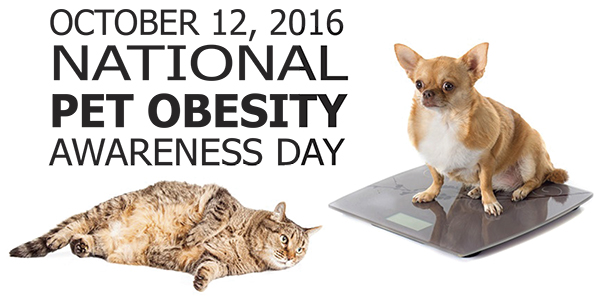
Is your fur baby a little on the heavy side? Perhaps, but certainly not overweight or obese! Besides how heavy is too heavy? Based on the 2015 research conducted by the Association for Pet Obesity Prevention (APOP)* the majority of cats and dogs are overweight or obese.
It is important to be aware of the risks associated with excess weight in pets such as high blood pressure, heart and respiratory disease, and many forms of cancers. It also decreases life expectancy by up to 2.5 years.
A few tips to help keep your pet at a healthy weight:
- MONITOR MEALTIMES – For many pets it is best to provide food at mealtimes rather than having their bowl filled with food available at all times. Determine your pet’s calorie needs and divide that into 2 or 3 mini meals. Avoid giving your pet table food or table scraps because prepared people food is usually higher in salt, sugar and fat content than is healthy for pets.
- LIMIT SNACKS OR TREATS – Treats add calories and must be counted as part of your pet’s daily calories. Offer healthy snacks and consider replacing treats with other rewards such as belly rubs, body massage, and extra hugs.
- TAKE MORE WALKS – Both of you will benefit from daily walks around the neighborhood or dog park. Start with short walks and watch for signs of over exertion especially if your pet is older or already overweight.
- REGULARLY MONITOR WEIGHT – Routinely weigh your pet approximately once every two weeks at the same time of day and on the same scale for accuracy. This will help you notice weight loss or gains and maintain a record for your pet’s health file.
The Association for Pet Obesity Prevention (APOP) was founded in 2005 by veterinarian, Dr. Ernie Ward. APOP’s mission is to develop and promote weight loss programs. They have launched campaigns to fight pet obesity.
See their website for helpful weight loss tools to help you monitor your pet’s weight – http://petobesityprevention.org/
